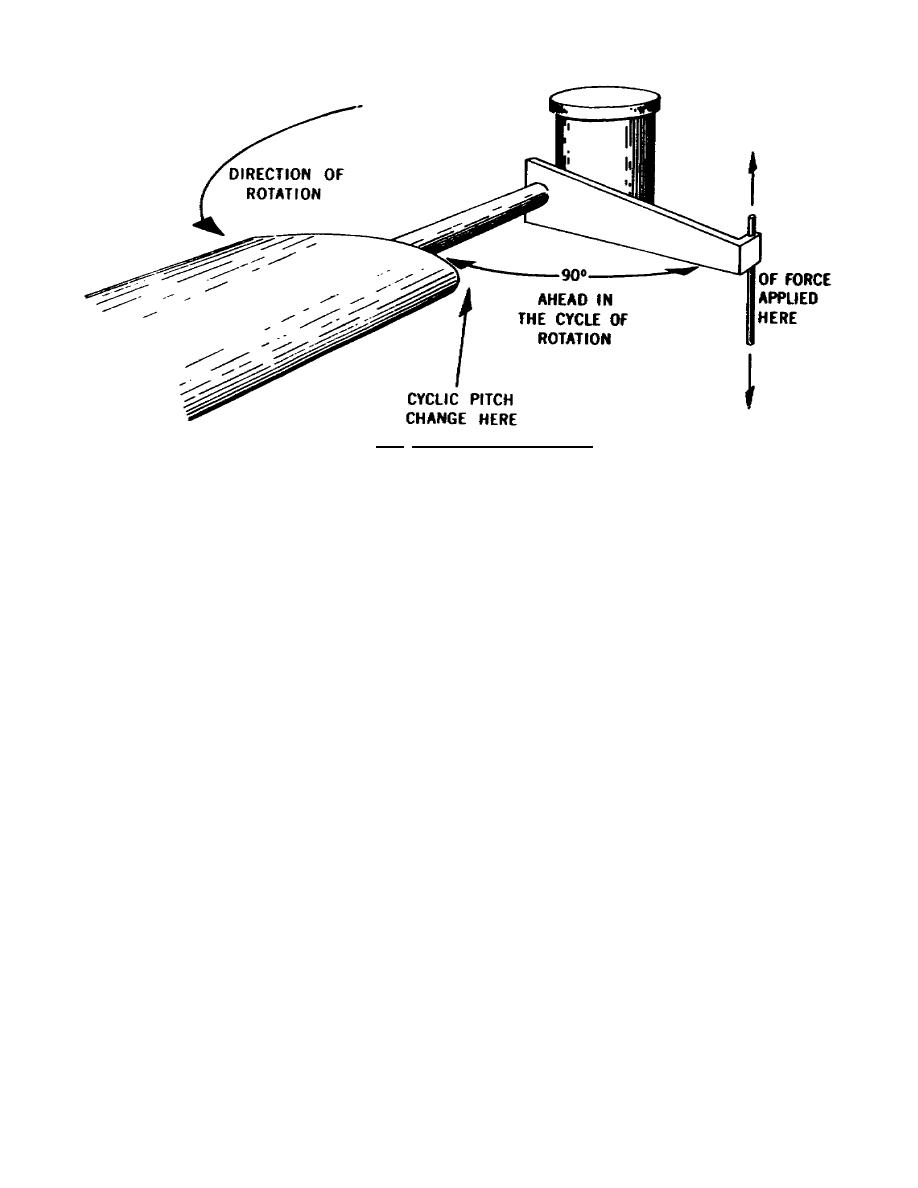
Figure 3.6. Offset Control Linkage.
3.8. DISSYMMETRY OF LIFT
The area within the circle made by the rotating blade tips of a helicopter is known as the disc area or
rotor disc. When hovering in still air, lift created by the rotor blades at all parts of the disc area is equal.
Dissymmetry of lift is the difference in lift that exists between the advancing half of the disc area and the
retreating half, and it is created by horizontal flight or wind.
When a helicopter is hovering in still air, the tip speed of the advancing blade is about 600 feet per
second. The tip speed of the retreating blade is the same. Dissymmetry of lift is created by the
horizontal movement of the helicopter in forward flight, and the advancing blade has the combined
speed of blade velocity plus speed of the helicopter. The retreating blade loses speed in proportion to the
forward speed of the helicopter.
Figure 3.7 illustrates the dissymmetry of lift and shows the arithmetic involved in calculating the
differences between the velocities of the advancing and retreating blades. In the figure, the helicopter is
moving forward at a speed of 100 knots, the velocity of the rotor disc is equal to approximately 355
knots, and the advancing rotor speed is 455 knots. The speed of the retreating blade is 255 knots. This
speed is obtained by subtracting the speed of the helicopter (100 knots) from the tip speed of 355 knots.
As can be seen from the difference between the advancing and retreating blade velocities, a large speed
and lift variation exists.
24



 Previous Page
Previous Page
